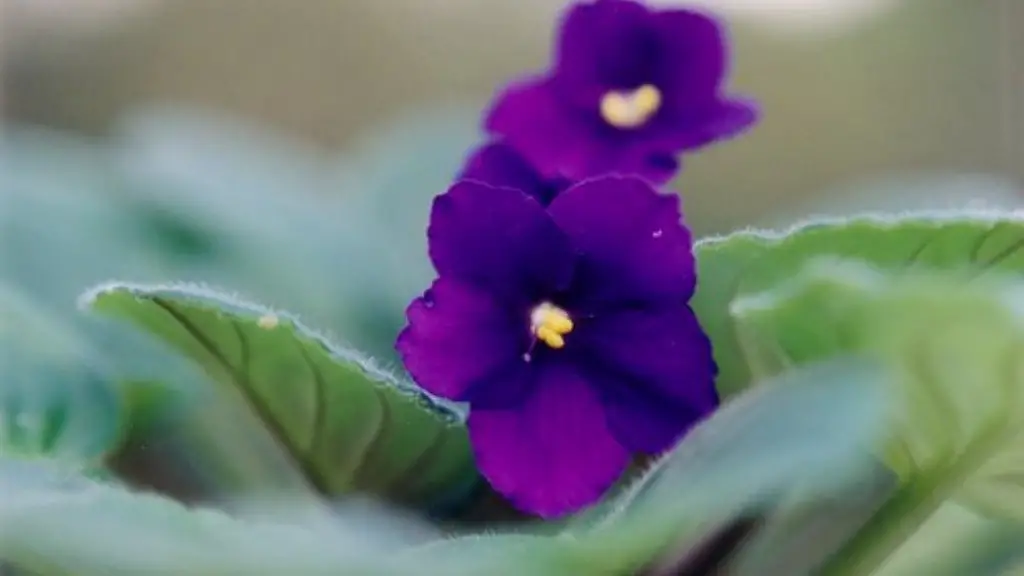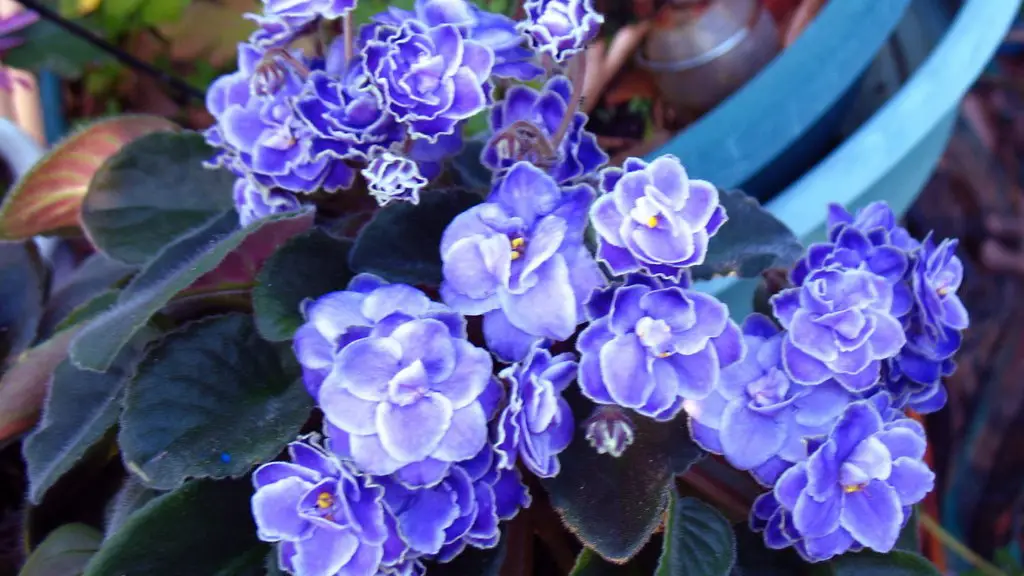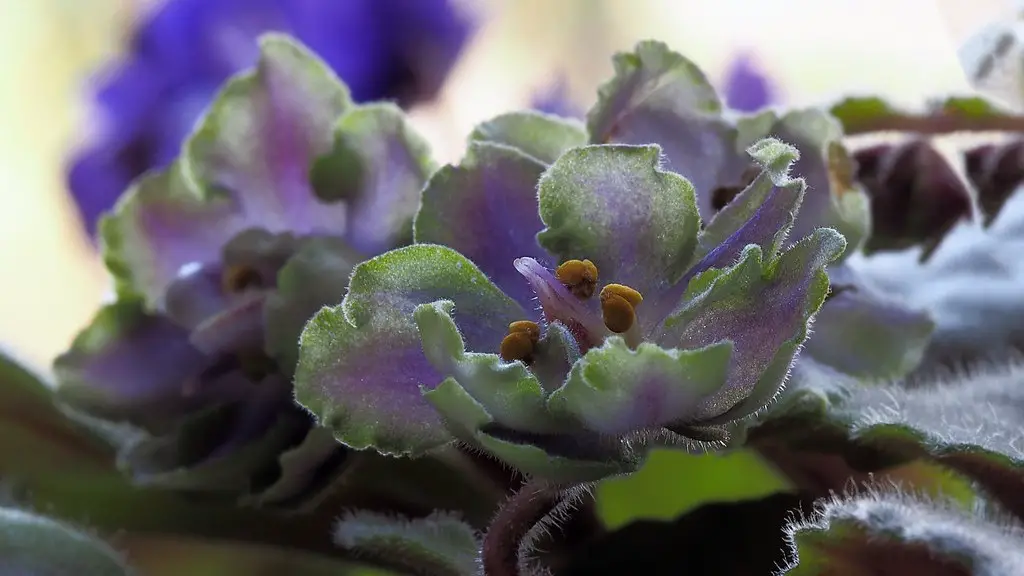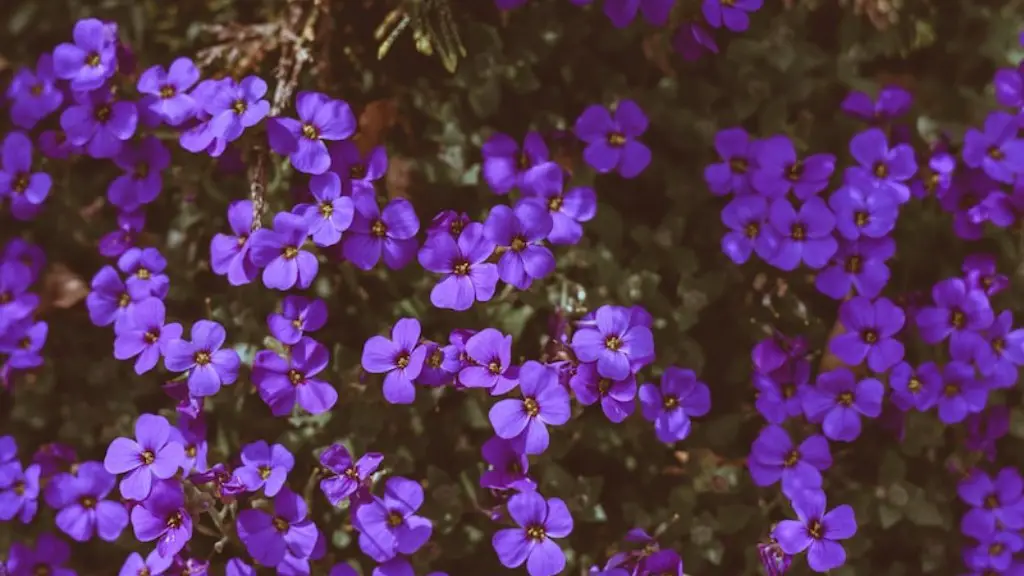The African violet is a beautiful and popular houseplant, but many people are disappointed when their plants don’t bloom. There are a few reasons why this may happen.
One reason is that the plant is not getting enough light. African violets need bright, indirect light to bloom well. If your plant is in a dark room or is getting too much direct sun, it may not bloom.
Another reason is that the plant is not getting enough fertilizer. African violets need to be fertilized regularly to bloom well. If you have not been fertilizing your plant, that may be why it is not blooming.
Finally, it is also possible that your plant is not getting enough water. African violets need to be kept evenly moist, but not too wet. If your plant is too dry or too wet, it may not bloom.
If you are not sure why your African violet is not blooming, ask a professional at your local nursery or garden center for help.
There could be a number of reasons why your African violets are not blooming. Some possible reasons include: too much light, not enough light, not enough water, too much water, too much fertilizer, not enough fertilizer, or pests. If you are not sure what the problem is, you may want to consult with a local nursery or gardening center.
How can I get my African violet to bloom?
To get the best results with African violets, they should be placed in an area with bright, indirect sunlight. Too little sunlight will cause the plants to stretch for the light and produce few or no flowers, while too much sun can burn the leaves. An east-facing window is ideal, especially with a sheer curtain to block the sun’s harshest rays. African violets also need eight hours of darkness every night.
African violets are a type of plant that can bloom nearly year-round. If you are able to provide the correct conditions, expect your African violets to bloom 10-12 months each year. Each bloom lasts for about 2-3 weeks.
How long does it take for an African violet to rebloom
African violets typically bloom every 6 to 8 weeks. However, with the right growing conditions, they can produce flowers more often.
A wicking system is a great way to make sure your African violets are never over watered. This system allows the plant to completely dry between waterings.
Does Epsom salt help African violets bloom?
Epsom salts are a great way to provide plants with essential magnesium and sulfur. These two minerals are needed to produce beautiful blooms and healthy foliage. To use, mix one and a half teaspoons of Epsom salts in a quart of tepid water and swirl to dissolve. Water your African violets (below the leaves) with this solution once a month.
African violets need well-drained, slightly acidic soil in order to thrive. Miracle-Gro® Indoor Potting Mix is a great option for providing them with the ideal growing environment.
Should African violets be misted?
Hi there,
Just wanted to make a quick note about watering African violets. It’s important to not mist the foliage, as this can cause permanent leaf spotting. Instead, use room temperature water and water the plant at the base, being careful not to saturate the crown (this can cause crown rot).
Thanks!
It’s important to repot your African violets every few years to keep them healthy and blooming. McEnaney recommends repotting them in the spring, after they’ve bloomed. “This will give them a chance to get acclimated to their new home before they start blooming again,” he says. Use a pot that’s only an inch or two larger in diameter than the current pot, and make sure the pot has drainage holes. Fill the pot with a quality African violet potting mix, and water thoroughly.
Should African violets be watered once a week
When watering African violets, it is best to bottom water. This means that you should add water to the bottom of the pot, and then allow the plant to absorb the water as needed. African violets typically only need to be watered once a week, but this may vary depending on the temperature, season, and size of the pot.
These are the six best pots for African violets according to our research. All of these pots have self watering features, which African violets need in order to thrive. They also come in a variety of colors and styles, so you can choose the one that best suits your home.
How do I know if my African violet is overwatered?
If you have over-watered your African Violet plant, the soil will be soggy and wet, the leaves will be browning/yellowing, soft, mushy and limp.
African violets are lovely plants that thrive indoors with relatively little care. However, to keep them looking their best, they do need to be re-potted every 6 months or so. This not only freshens up the potting soil, but also gives the plant a chance to spread out a bit and fill in any bare spots. African violets do best if they are kept in the same size pot, so simply choose a fresh pot that is the same size as the old one. With a little attention, your African violets will continue to bloom and bring you enjoyment for many years to come.
Can I water African violets with tap water
There are a few things to keep in mind when watering your African violets with tap water. Depending on the location, the quality of tap water can vary. Chlorine levels in particular may fluctuate, depending on the season. In some areas, tap water may have high amounts of chlorine, chloramines, or dissolved solids. All of these things can adversely affect your African violets. It’s always best to err on the side of caution and use filtered or distilled water if possible.
Watering your plant correctly is key to encouraging blooming. Keep the soil around the roots moist to dry, and allow the soil to dry out before watering again to encourage blooming. Water from the bottom by placing the plastic grower’s pot in room temperature water and allowing the plant to absorb the water (not more than 30 minutes).
Do African violets like coffee grounds?
Coffee grounds are slightly acidic and contain nitrogen, which helps plants grow healthy foliage. Occasionally sprinkling used coffee grounds on top of your African violet potting soil can be good for the plant.
If your African violet has dry or burnt leaf tips, it is likely dehydrated. Try placing your plant on a humidity tray to increase the moisture in the air. If your African violet has drooping leaves, it may be due to low temperatures. Keep your indoor environment around 70 degrees Fahrenheit, even at night.
Final Words
There are several possible reasons for why your African violets may not be blooming. One possibility is that they are not getting enough sunlight. African violets need at least 12 hours of bright, indirect light per day in order to bloom. Another possibility is that they are not getting enough water. African violets need to be kept moist, but not soggy. Overwatering can cause root rot, which can prevent blooming. Finally, African violets may not be getting enough fertilizer. They need a fertilizer that is high in phosphorus, which promotes blooming.
There could be several reasons why african violets are not blooming. One possibility is that the plant is not getting enough light. African violets need at least 12 hours of light per day to bloom. Another possibility is that the plant is not getting enough water. African violets should be watered about once a week, allowing the soil to dry out slightly between waterings. If the plant is getting enough light and water, it may be that it is not getting enough fertilizer. African violets need to be fertilized every 2-4 weeks with a fertilizer specially formulated for african violets.





